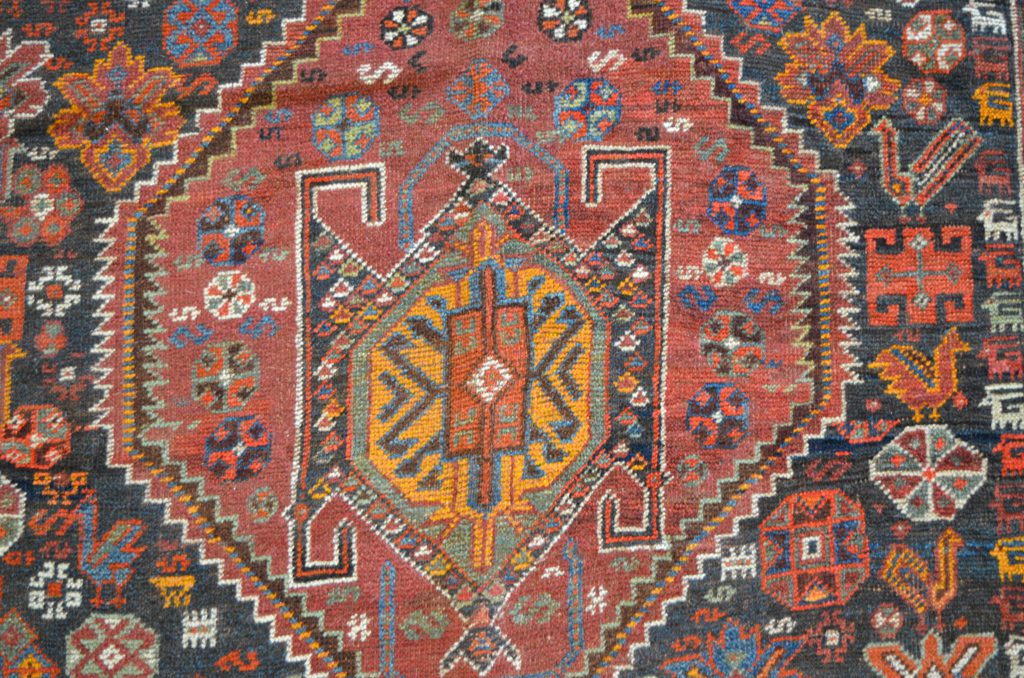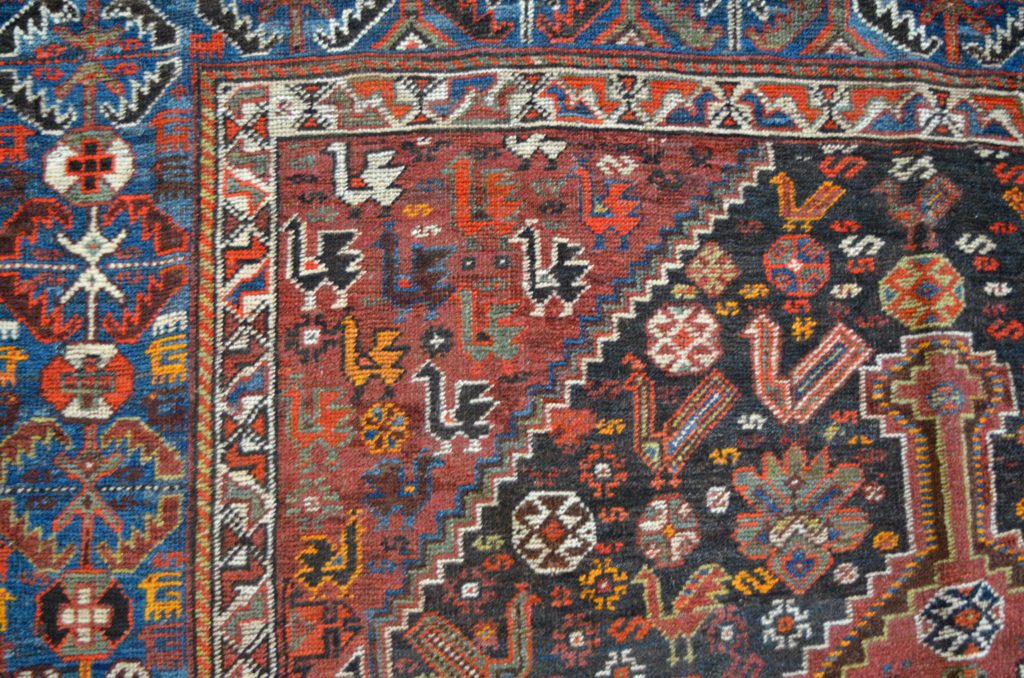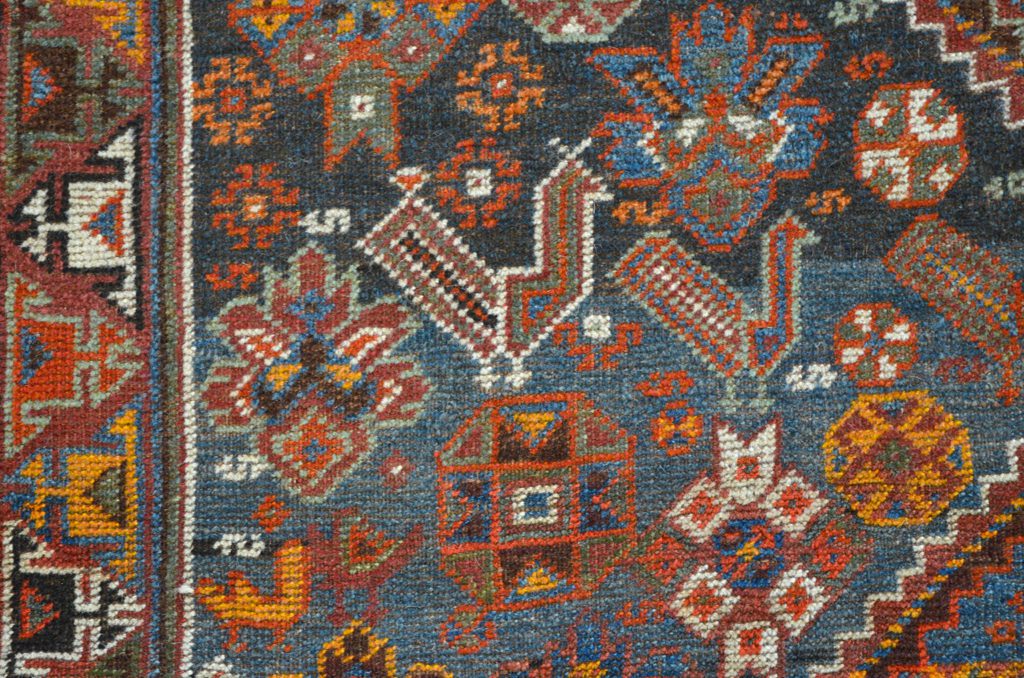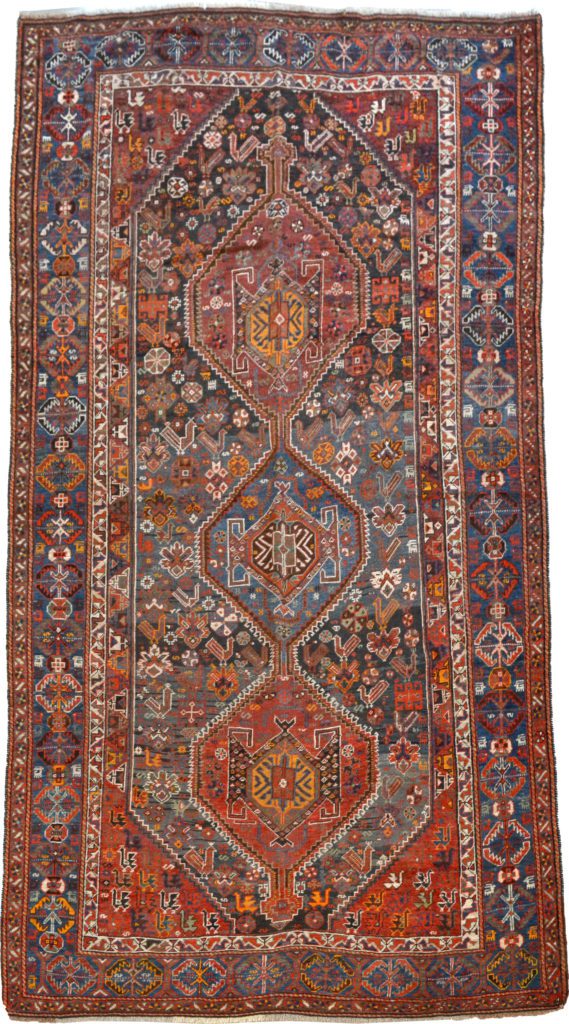Antique Spotlight – Persian Qashqai Neriz Carpet
In this week’s Antique Spotlight, we will be reviewing a Persian Neriz carpet from the Qashqai region. This unique piece dates to the 1880s and exhibits stunningly intricate details for its provenance. Continue reading to learn about its hand-knotted construction, its symbolism, and what makes this Qashqai unique compared to other rugs of this region.
Known for their magnificent tribal carpets, the Qashqai people create these fabulous pieces in the home by utilizing a hand-knotted wool pile on a wool foundation. Weavers would begin with wool shorn from the Persian fat-tailed sheep. This breed of sheep produces a high level of lanolin within its woolen fibers. The shorn wool is then hand-spun into heaps of yarn. Hand-spinning the wool re-introduces the lanolin back into the fibers and combines multiple strands of wool, creating the striations found within the design. Once spun, dye-masters utilize traditional recipes of organic vegetable dyes. Once dyed, weavers move the heaps of yarn into natural river water to remove the excess dyes and then dry the wool in the sun to set the patina. Weavers then begin the tedious process of hand-knotting the woolen pile onto the foundation.

Unlike the carpets typically created in the larger cities or workshops, tribal rugs do not rely on a grid or pre-determined design. Rugs from areas like the Qashqai region utilize similar motifs and designs yet pride themselves on creating one-of-a-kind pieces inspired by the weaver’s creativity. Design trends within Qashqai carpets include the three-diamond- medallion, floral, butterfly, and caterpillar motifs, warm neutral colors, and even human-animal motifs. In addition to their cheery and playful themes, carpet collectors also appreciate these tribal rugs for their symbolism and the stories they tell. For example, within a garden theme, weavers utilize a variety of motifs to represent the symbiotic elements of nature and the circle of life. By showcasing the many elements interacting with each other in this environment, the weaver honors this ecosystem and the endurance of the natural world.

Measuring 4’9” x 6’2”, our Qashqai example boasts three large diamond-shaped medallions, detailed by maroon, indigo, orange, green, brown, and cream wool, resting atop a light gray background. The medallions feature a repetitive hook design which is an essential identifier of Qashqai carpets. Weavers utilize multiple versions of floral, caterpillar, and butterfly motifs to represent the circle of life and how each element depends on the other to survive. These motifs, detailed in orange, red, green, and blue, are scattered within the interior field of the carpet, filling the design. Encompassing the interior stands an intricate border detailed by an indigo background. The exterior includes a Herati-inspired motif with four caterpillars surrounding a small flower. These motifs reiterate the garden symbolism with small goat motifs, waiting to feast upon the flowers. So what makes this Qashqai Neriz carpet different from other Qashqai pieces?

The difference is within the foundation. Unlike most Qashqai carpets that utilize a wool foundation, Neriz carpets differ by implementing a cotton foundation. Typically overlooked, a cotton foundation will stretch less over time and thus extend the carpet’s longevity compared to a wool foundation. This cotton foundation is rare for Qashqai carpets, thereby adding to its value.

With one antique carpet holding so much symbolism and prestige, it is no wonder that antique rugs are so valuable and sought after. If you enjoyed this Qashqai carpet and want to view this, as well as antique other antique carpets, check out Orleyshabahang.com to view our antiques and our 1st Dibs digital showroom.

